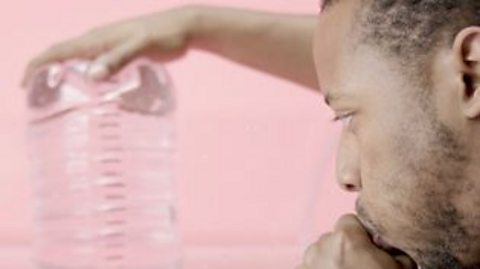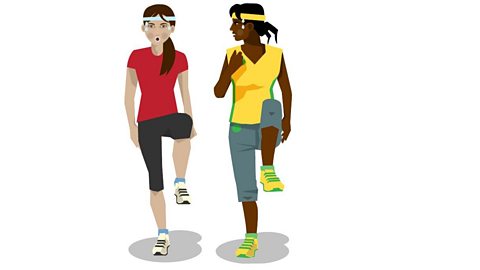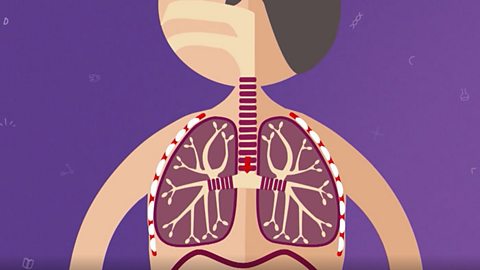The experiment
This is an example of a common experiment used to investigate light intensity and the rateHow quickly something happens. of photosynthesisA process in which plants and algae covert light, carbon dioxide and water into glucose and oxygen.
Try the experiment online
Try out this experiment in Atomic Labs. Go to the Biology lab and try the light intensity and photosynthesis experiment.
Atomic Labs game. gameAtomic Labs game
Try out practical experiments in this KS3 science game

Try the experiment in the lab
Aim
To use pondweed to see how light intensity affects the rate of photosynthesis.
Method
Set up the apparatusPieces of equipment. as in the diagram.
Leave for five minutes for the pondweed to acclimatise to the new light intensity.
Count the number of bubbles given off in one minute.
Move the light 10 cm further back.
Leave for five minutes for the pondweed to acclimatise again.
Count the number of bubbles given off in one minute.
Repeat by moving the lamp away by 10 cm intervals until 50 cm is reached.
Variables
Independent variable: the light intensity (how close the light is).
Dependant variable: the number of oxygen bubbles given off (the rate of photosynthesis).
Controlled variables: the size of the pondweed, the volume of water used and its temperature.
Risks
What are the risks to safety in this experiment?
- Care must be taken with glassware.
- The bulb may get very hot.
Results
Expected results
Below are a set of results for this experiment. The number of bubbles in your experiment might be different, but the trend - the further away the lamp is, the fewer bubbles there are, should be the same.
| Distance from lamp to beaker (cm) | Number of bubbles given off per minute |
|---|---|
| 10 | 15 |
| 20 | 7 |
| 30 | 3 |
| 40 | 1 |
| 50 | 0 |
What the results mean
More oxygen bubbles are produced when the light is closer to the beaker. So a greater light intensity gives a greater rate of photosynthesis.
Evaluation
At the end of an investigation, it is important to evaluateTo consider the quality of data and suggest improvements to a method. the results and the method. After this is done, a judgement is made about how reliable the conclusion is.
Video
Watch the measuring photosynthesis experiment
You’ll need a dark room with a desk lamp, some pondweed, a glass of water, a ruler, and paper and pen.
To start, put some pondweed - which can be bought from any pet shop - into a glass full of water. Then set up a lamp 10 cm away from where the pondweed floats. Give the pondweed five minutes to adjust to the lamp light.
Start to count the oxygen bubbles coming from the pondweed for one minute.
Water actually contains small amounts of carbon dioxide gas which is dissolved in it. The plant uses the energy from the lamp light to turn the carbon dioxide and the water into glucose, which it needs to live. The by-product of this reaction is bubbles of oxygen.
After a minute, move the lamp back another 10cm and allow the pondweed to get used to the more distant light. Then get counting the oxygen bubbles again.
Do this again from 30 cm away.
What you should notice is that as you move the lamp further away, the number of bubbles decreases.The closer the light, the more energy is going into the plant, which speeds up the reaction, producing more oxygen bubbles.
GCSE exam dates 2025
Find out everything you need to know about the 2025 GCSE exams including dates, timetables and changes to exams to get your revision in shape.

More on Respiration and gas exchange
Find out more by working through a topic
- count13 of 13

- count2 of 13

- count3 of 13
